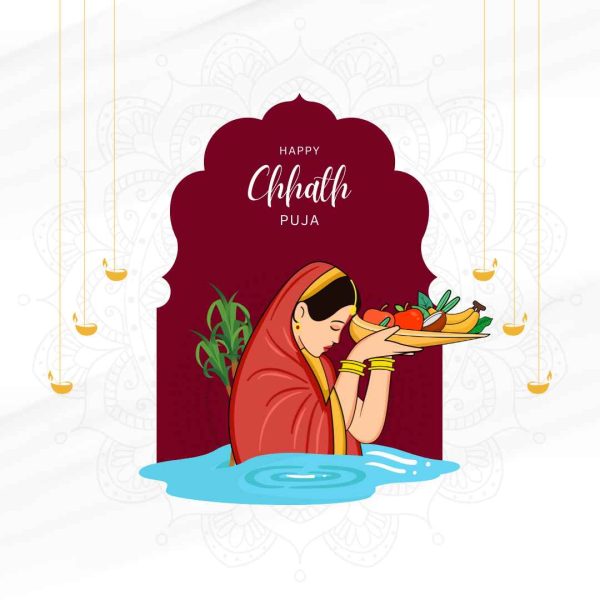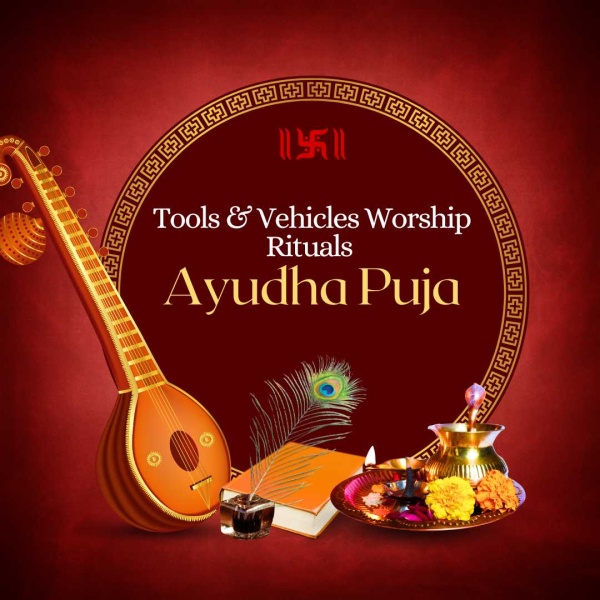Durga Puja is a monumental event celebrated with great fervor across India, especially in West Bengal, Assam, Odisha, and parts of East India. Marking the victory of Goddess Durga over the demon Mahishasura, the festival symbolizes the triumph of good over evil and the empowerment of feminine divine energy, Shakti. In 2025, Durga Puja will be celebrated from September 21 to October 2, integrating a blend of spiritual devotion, artistic expression, and communal joy.
This blog explores the key rituals, the magnificent pandals that adorn cities, and the deep spiritual significance of Durga Puja 2025. Additionally, it highlights the connection with the ongoing Sharad Navratri festival and the concluding victory celebrations of Dussehra.
Also read – Festival in October 2025: Complete List of Hindu Festivals
What is Durga Puja?
Durga Puja marks the annual celebration of Goddess Durga’s victory over the demon Mahishasura. The festival venerates the divine feminine energy or ‘Shakti’ as the embodiment of strength, courage, and compassion. It usually spans five days, culminating with the immersion of the Goddess’s idol, symbolizing her return to the celestial realm.
More than a religious festival, Durga Puja embodies communal unity, artistic expression, and cultural heritage, especially celebrated with fervor in West Bengal, Assam, Odisha, and other eastern states. Iconic pandals (temporary structures) and artistic idols draw millions of devotees and tourists each year, creating a vibrant atmosphere of faith and festivity.
Historical Background and Mythological Origins of Durga Puja
The festival finds its roots in ancient Hindu mythology where the gods, troubled by the tyranny of Mahishasura, created Goddess Durga through their collective power. Wielding weapons endowed by the gods and riding a fierce lion, Durga battled the demon for nine days, finally defeating him on the tenth day, Vijayadashami. This mythological narrative forms the foundation of the Durga Puja festival, reviving themes of courage, righteousness, and the power of good to vanquish evil.
Over centuries, Durga Puja transformed from a strictly religious event into a grand cultural spectacle. Initially celebrated privately among royal families and elites, the festival expanded to become a vibrant public celebration embracing diverse communities and artistic innovations. The emergence of elaborately designed pandals (temporary structures housing the goddess’s idol), theatrical performances, and social events highlight this evolution.
Significance of Durga Puja
Religiously, Durga Puja serves as a portal for devotees to seek protection, wisdom, and blessings from the goddess. It is a period of spiritual reflection, ritualistic worship, and renewal. Beyond religion, Durga Puja promotes community bonding, cultural pride, and artistic creativity. The traditional dances, music, and food festivals during this period reinforce social harmony and cultural heritage.
The Goddess Durga herself embodies strength, compassion, and resilience, inspiring millions to face life’s challenges with courage and determination. The festival’s rituals and celebrations remind devotees of the eternal cycle of good triumphing over evil, encouraging ethical living and spiritual growth.
The Vibrant World of Pandals and Cultural Expression
Pandals form the sensational visual core of Durga Puja. Artists craft these transitory structures ranging from traditional temple replicas to modern thematic showcases reflecting contemporary social and environmental themes. Each pandal offers a unique ambiance that blends spirituality, creativity, and community engagement. Alongside, storytelling, musical performances, dances like Dhunuchi Naach, and culinary feasts elevate the festive mood, engaging millions of participants across ages.
Connection with Sharad Navratri and Dussehra
Durga Puja shares a profound spiritual and temporal link with Sharad Navratri, another significant festival where nine forms of Goddess Durga are worshipped over nine nights. While Navratri encompasses the entire spectrum of Durga’s incarnations, Durga Puja highlights her most celebrated form and her victory over evil.
The culmination of Durga Puja overlaps with Vijayadashami or Dussehra, a day that honors Lord Rama’s victory over Ravana. Both festivals converge on the universal theme of the triumph of good over evil, fostering a unified spirit of devotion and celebration across India.
Durga Puja 2025 Dates to Remember
- Mahalaya: September 21, 2025 (Invoking Goddess Durga)
- Maha Sashthi: September 28, 2025 (Idol unveiling and ritual beginning)
- Maha Saptami: September 29, 2025 (Nabapatrika ritual)
- Maha Ashtami: September 30, 2025 (Sandhi Puja and Kumari Puja)
- Maha Navami: October 1, 2025 (Penultimate day pujas)
- Vijaya Dashami: October 2, 2025 (Idol immersion and Dussehra celebration)
Key Rituals of Durga Puja
Bodhan and Kalapdhan
The festival begins with the ‘Bodhan’ (awakening of the Goddess) ceremony, where the eyes of the idol are painted, symbolizing divine awakening. Subsequently, Kalapdhan rituals invoke the Goddess’s presence.
Nabapatrika Snan
On Maha Saptami, nine plants (representing the Goddess’s various forms) are bathed ceremonially and worshipped as ‘Nabapatrika.’
Sandhi Puja
The most sacred ritual, Sandhi Puja, is performed at the juncture of Ashtami and Navami. It represents the moment Goddess Durga transformed into her fierce form to slay demons Chanda and Munda, symbolizing the victory of righteousness.
Kumari Puja
Young girls, symbolizing the pure and powerful feminine energy, are worshipped with great devotion during Kumari Puja.
Maha Aarti and Bhog Offering
Artis (worship with lamps) held every evening invoke divine blessings. Devotees also offer ‘Bhog,’ a sacred food offering often including kheer, fruits, and traditional dishes like Khichuri and Labra, which hold special significance during the festival.
Sindoor Khela and Visarjan
On Vijaya Dashami, married women participate in Sindoor Khela, applying vermilion to the Goddess and to each other, symbolizing fertility and marital bliss. The festival concludes with the visarjan (immersion) of Durga idols into water bodies, marking her return to Mount Kailash.
Magnificent Pandals and Cultural Extravaganza
Pandals are the heart of Durga Puja celebrations. These elaborately decorated, often themed temporary structures house the idols and serve as cultural hubs. Artists engage in innovative displays, blending traditional motifs with contemporary art, making each pandal unique.
Besides worship, pandals host cultural programs featuring dance, music, drama, and communal feasts. These events foster a vibrant cultural exchange, uniting people across generations and backgrounds.
Spiritual and Cultural Significance
Durga Puja embodies the eternal battle between good and evil, inspiring devotees to embrace virtues of courage and righteousness. The festival emphasizes feminine divinity, celebrating strength, compassion, and nurturing qualities.
Spiritually, it invites reflection, renewal, and the uplifting of one’s inner power. Culturally, it binds communities, celebrates artistry, and instills pride in shared heritage.
Link with Sharad Navratri and Dussehra
Durga Puja often overlaps with Sharad Navratri, a nine-night festival dedicated to Goddess Durga’s nine forms. Both festivals share the theme of divine strength and are celebrated with similar fervor. Durga Puja brings Navratri’s spiritual energy to life with elaborate rituals and artistic devotion.
The culmination of Durga Puja with Vijayadashami aligns with Dussehra’s celebration, marking the destruction of evil. Together, they form a continuum of devotion, celebration, and reaffirmation of positive values.
Embracing the Spirit of Durga Puja 2025
Durga Puja 2025 promises a magnificent confluence of spirituality, culture, and community. Rituals, pandals, and the festival’s deeper meaning connect us with the divine feminine power.
As the nation celebrates joyfully, the festival shines as a reminder that good conquers evil, inspiring strength, hope, and unity.


1 Comment